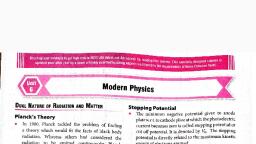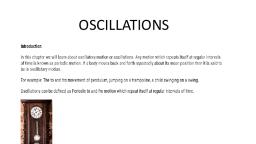Question 1 :
Significant motion for the molecules of a monoatomic gas corresponds to :
Question 2 :
A bullet travelling at 100 $ms^{-1}$ suddenly hits a concrete wall. If its K.E. is converted completely into heat, the raise in temperature is $\left ( s=100Jkg^{-1}K^{-1} \right )$ :<br/>
Question 4 :
<p class="wysiwyg-text-align-left">The Universal gas constant may be expressed as :<br/></p><p class="wysiwyg-text-align-left">a) 8.31 J/mole-K         c) 2.00 J/mole-K</p><p>b) 8.31 cal/mole-K       d) 2.00 cal/mole-K</p>
Question 5 :
The gas law $\left [ \dfrac{PV}{T} \right ]=$ constant is true for<br/>
Question 6 :
<p class="wysiwyg-text-align-left">In the equation PV=constant, the numerical value of constant depends upon<br/></p><p class="wysiwyg-text-align-left">a) temperature                 b) mass of the gas</p><p>c) system of units used   d) nature of the gas</p>
Question 7 :
The mean free path of a gas varies with absolute temperature as :
Question 8 :
Two gases, carbon monoxide $(CO)$ and nitrogen $(N_2)$ at the same temperature, have kinetic energies $E_1$ and $E_2$ respectively. Then :<br/>
Question 9 :
<p class="wysiwyg-text-align-left">If the temperature of a gas is increased by 1 K at constant pressure, its volume increases by 0.0035 of the initial volume. The temperature of the gas is :</p>
Question 10 :
<p class="wysiwyg-text-align-left">A sample of $O_{2}$ gas and a sample of hydrogen gas both have the same no. of moles, the same volume and same pressure. Assuming them to be perfect gases, the ratio of temperature of oxygen gas to the temperature of hydrogen gas is :<br/></p>
Question 11 :
<p class="wysiwyg-text-align-left">The temperature of a gas contained in a closed vessel is increased by 2 K when the pressure is increased by 2%. The initial temperature of the gas is :<br/></p>
Question 12 :
Which of the following do not have fixed shape but occupy definite volume?
Question 13 :
State whether True or False, and correct the statements if false:<br>(i) the molecules of solids are tightly packed.
Question 16 :
<p class="wysiwyg-text-align-left">A gas at temperature 27$^{0}$C and pressure 30 atmospheres is allowed to expand to one atmospheric pressure. If the volume becomes 10 times its initial volumes, the final temperature becomes :<br/></p>
Question 18 :
A molecule of gas in a container hits one wall (1) normally and rebounds back. It suffers no collision and hits the opposite wall (2) which is at an angle of $30^o$ with wall 1.<br>Assuming the collisions to be elastic and the small collision time to be the same for both the walls, the magnitude of average force by wall 2. $(F_2)$ provided the molecule during collision satisfy<br>
Question 19 :
To find out degree of freedom, the correct expression is :
Question 20 :
From what minimum height, a block of ice has<b> </b>to be dropped in order that it may melt completely on hitting the ground :<br/>
Question 22 :
In Rutherford's experiment, most of the alpha particles are observed to
Question 23 :
The nature of the graph of pressure 'P' against reciprocal of volume 'V' of an ideal gas at constant temperature is 
Question 24 :
The internal energy of a diatomic gas us given as $U=U_0V$, where $U_0$ is a constant . Molar heat capacity of gas is
Question 25 :
If the pressure in a closed vessel is reduced by drawing out some gas, the mean-free path of molecules :
Question 26 :
A system consists of N particles, which have independent K relations among one another. The number of degrees of freedom of the system is given by :
Question 27 :
With increases of temperature, the vibration volume in any substance _____
Question 28 :
A vessel has 6g of hydrogen at pressure P and temperature 500K. A small hole is made in it so that hydrogen leaks out. How much hydrogen leaks out if the final pressure is $P/2$ and temperature falls to 300K?
Question 29 :
The value of $\gamma$ for gas X is 1.66, then x is :
Question 31 :
<p class="wysiwyg-text-align-left">Two containers of equal volume containing the same gas at pressure $P_{1}$ and  $P_{2}$ and absolute temperature  $T_{1}$ and  $T_{2}$ respectively were connected with narrow capillary tube. The gas reaches a common pressure P and a common temperature T. The ratio P/T is equal to :<br/></p>
Question 34 :
A man is climbing up a spiral type staircase. His degrees of freedom are :
Question 35 :
Pressure of an ideal gas is increased by keeping temperature constant. What is effect on kinetic energy of molecules?
Question 36 :
A gas mixture contain $1 g$ ${H_2}$ and $1 g$ ${H_e}$ temperature of gas mixture is increased from ${0^ \circ }$ to ${100^0}C$ at isobaric process. Then find given heat of gas mixture<br>$\left[ {{\gamma _{He}} = 5/3,\,{\gamma _{He}} = 7/5,R = 2\,cal/mol - K} \right]$<br>
Question 38 :
At room temperature (27$^0$ C) the rms speed of the moleculesof certain diatomic gas is found to be 1920 ms$^{-1}$ then the molecule is:
Question 39 :
In Rutherford alpha particles scattering experiment, thin layer of which metal was used?
Question 42 :
<p class="wysiwyg-text-align-left">If the volume of the gas is to be increased by 4 times :</p>
Question 43 :
If the value of R = 2/5 C$_v$ for a gas, then the atomicity of the gas will be:
Question 44 :
The average energy per molecule of a triatomic gas at room temperature T is?
Question 45 :
A gas has an average speed of 10 m/s and a collision frequency of 10 $s^{-1}$. What is its mean free path?<br>
Question 46 :
The relation PV=RT can describe the behavior of a real gas at :
Question 47 :
The average kinetic energy of the particles of a gas is most closely associated with which of the following quantity? <br/>
Question 48 :
State whether true or false.<br/>The arrangement of particles in a liquid is less ordered compared to solids. However, there is no order in the arrangement of particles in the gaseous state.<br/>
Question 49 :
Gas exerts pressure on the walls of container because the molecules-
Question 50 :
For any gas the pressure coefficient ($\beta $) is equal to the volume coefficient ($\alpha $). This can be proved by:<p></p>














































